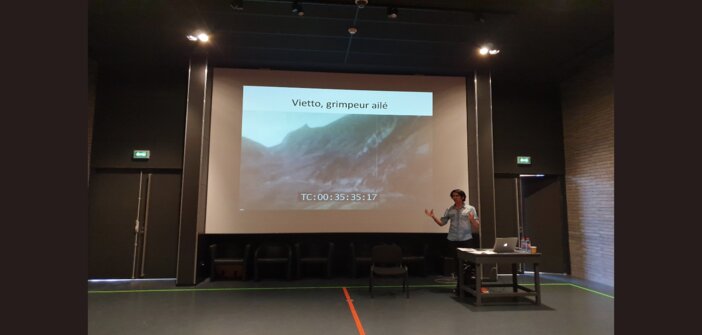Yesterday at the National Sports Museum, Julien Camy, a journalist and director of a film about René Vietto, painted a portrait of this fallen champion who loved cycling until the point of amputation.
René Vietto is somewhat the “champion of the losers.” Even today, he has left an indelible mark on the history of French cycling (considered the emblematic cyclist of the 1930s and 40s). He is the Frenchman who wore the yellow jersey the longest in history without ever winning the Tour de France. This may be one of the greatest disappointments of his life.
René Vietto was born on February 17, 1914, in Le Cannet (06). In his youth, he worked alongside his mother as a flower picker. He left school at 13 and helped his mother with her grocery deliveries. It was at this time that he developed a real “passion” for cycling. Perhaps to fill a void. He said in an interview: “I found a bicycle, took it, and rode all the way to Toulon. It was the police who brought me back, in a terrible state.” From a young age, he developed a taste for long journeys.
The big plunge
He then joined the Etoile Sportive de Cannes and won his first race in March 1931: the Sospel loop, while still only 16 years old. At that time, the southeast was a “land of cycling.” He immediately dove into the deep end by winning the Grand Prix de Cannes in 1932, establishing himself as a future champion. He wanted to emulate his idol: Alfredo Binda. A year later, he was selected for his first Giro, where he finished 18th, while admiring his idol win it for the 5th time. After that, he showed his desire to improve and constantly push further. He knew he needed “a style” on the bike, “you have to look good on a bike,” he said.
In 1934, he made his first appearance in the Tour de France, winning many stages, including that of Cannes, where he was the “Hero of the Day” in his hometown. From there, his fame skyrocketed. He, the “winged climber,” the “King of the Alps,” then of the Pyrenees. With such a presence on his bike. But in those Pyrenees, he left shattered hopes, forced to sacrifice himself for Antonin Magne, the leader of his team and the winner that year. The photo by the roadside, where Vietto cried, wasn’t missed by anyone. It was as if everyone put themselves in his shoes. It was from that moment that he became famous.
He became the “little darling.” Despite numerous physical problems, he won Paris-Nice in 1935. But his obsession with the yellow jersey haunted him. He wanted to wear it on the Champs-Elysées. During the 1939 Tour, he came close, by a thread. Yellow jersey for 11 days, he cracked during the 15th stage. He then finished second. The following year, the war prevented René Vietto from getting back on his bike to tackle the French cols.
The yellow jersey at all costs
During the war, he worked in a bicycle factory, which allowed him to travel across France. “People say he crossed France without ever paying anything, just thanks to his fame,” according to Julien Camy. But beyond sport, he thought about the future of cycling and innovation. He was even the first rider to place his water bottle on the frame, not the handlebars (a question of balance he had considered). He was a man with a lot of inventiveness, but who only had one thing in mind: winning the Tour de France.
In 1947, the Grande Boucle made its big comeback. Everyone awaited Vietto’s victory. From the 2nd stage, he grabbed the yellow jersey after his win in Brussels. He held it for most of the Tour, but collapsed in the time trial during the 19th stage, losing all hope of winning it. It was written that the “King of the Tour” would never win it.


